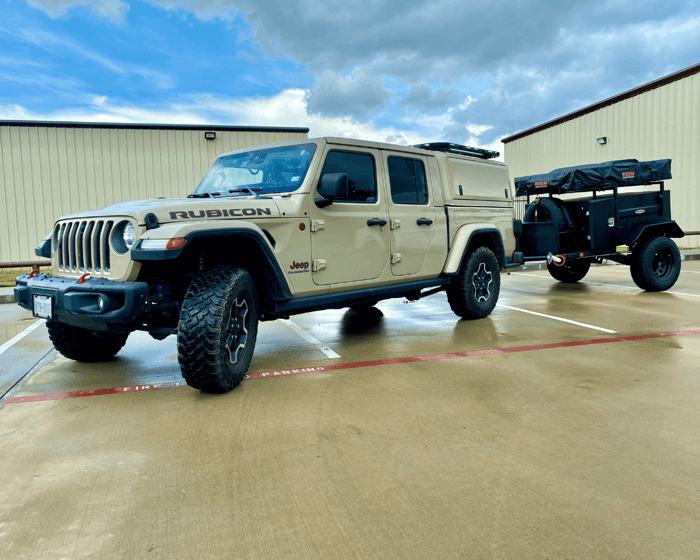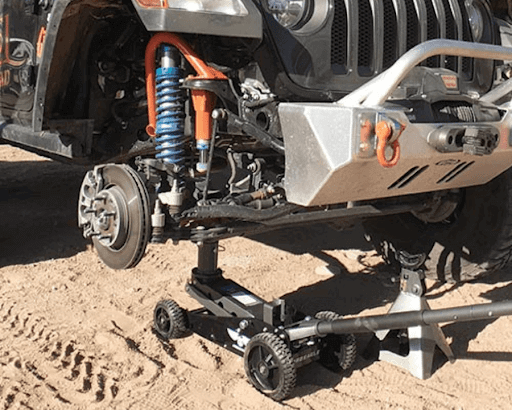
Winching Techniques: A Guide To Ensure You're Ready for Recovery
When you’re planning your custom off-road vehicle build, adding a good truck winch can help make sure you have the tools you need to get yourself or someone else out of a tight spot in the field. From ravines that didn’t look “that steep” to bogging down in a little too much mud, your winch can be a powerful off-road recovery tool. Like all tools, however, you have to know how to use it right if you want to get the most from your winch. Proper winch usage means more than just bolting an absolute unit of a motor onto the bumper. It includes having the winch and recovery gear needed, plus the knowledge to put them into action when it’s time to get to work.
Which Winch is Which?
When we talk about truck winches for off-roading, we usually mean the electric rigs that mount on or behind the bumper. Powered by the vehicle’s electrical system, they have a strong motor, gears meant for pulling, and a spool wound with cable or synthetic rope that you run out to attach to other vehicles or immovable objects. Manual winches do the job without the aid of electric motors, but you don’t see them often in off-roading, with one exception: the Hi-Lift beam jack. Hi-Lift jacks give you a strong pull powered by good old-fashioned elbow grease. While the principles we’re about to cover work the same, you’ll want to really dig in to understand the use of force multipliers and redirection, as these are best as either support for your electric winch or as a last resort.

Winching Action Explained
Your truck winch works on a relatively simple principle. Whatever special features it has, from automatic braking to temperature sensing technology, the bottom line is that it exerts a pulling action that creates straight-line force along a cable, rope, or strap. Winches don’t work well at angles past a few degrees, they don’t steer, and they don’t adjust. They simply pull, but they pull hard. Trying to get your winch to do anything else but pull straight can result in vehicle damage or injury, but in case you haven’t noticed, there aren’t a lot of straight lines in nature. If all a winch does is pull straight, how can it help recovery on uneven, undeveloped terrain where almost nothing around creates the perfect straight-line pull situation?
Winching Accessories
There are a lot of winching accessories on the market to help you pull better, and some of the most important ones to add to your kit are those that allow you to redirect and multiply the force exerted by your winch. This lets you pull at a better angle for efficiency, multiplies the power of your winch, or lets you hook onto vehicles and other objects better to ensure a clean pull. While there are a wide variety of specialized winching accessories on the market, here are a few essentials:
- Heavy Gloves - If you’re winching, you need some tough gloves to protect your hands. Metal cables can develop sharp barbs, splinters can get caught in rope fibers, and even without the threat of punctures or cuts, rope burn remains a danger anytime your hand is moving over the line.
- D-Shackles- D-shackles are simple, relatively inexpensive, and you can never have enough of them. They help you connect your winch and winch accessories for safe, reliable anchor points and pulls.
- Tree Straps - A strong tree can be the perfect anchor point, but hooking directly to the tree can damage the tree or your cable. It’s even possible that your anchor will fail, putting you and your truck in danger. Tree straps give you a safer way for to anchor for you and the tree.
- Snatch Blocks - These simple pulley systems give you the ability to redirect the direction of your pull, or multiply the force of your pull by creating a two-line winching layout.
- Rope/Cable/Straps - Your winch spool already has a line on it, but accessory ropes and lines can help you make sure your vehicle is secured to anchor points, stabilize the vehicle, and give you a longer reach when you need it.
- Winch Damper - As your cable stretches taut during a pull, it begins to store a lot of energy. If the cable snaps or a part of the winch or one of the accessories fails, that energy is released through the motion of the cable into anything it contacts, risking both injury and property damage. Winch dampers absorb that energy and help keep the cable from whipping violently into your body or other objects.
- Recovery Kits - These handy kits are meant to give you an easy and convenient entry point that jump-starts your recovery gear loadout. While they may not have everything you need, recovery kits have some of the key equipment you’ll need to make the most of your winch when recovery is necessary.
Using Your Winch

Single-Line Winch Rigging
Single-line rigging is the easiest, most direct pull you can do with a winch. Start by putting your gloves on and attaching the remote to your electric winch. Set the winch to neutral or free spool. Manually pull the cable to the anchor point. If the anchor point doesn’t have a permanent shackle or clevis, such as when using a tree, use a strap or rope around the anchor to hook your cable to. Attach the cable, making sure not to leave too much slack, and re-engage the winch. Use slow, short movements to take up the remaining slack in the line. If you’re pulling your vehicle out of a jam, place it in neutral and release the parking brake. If your vehicle is recovering another vehicle, ensure your parking brake is set and the other vehicle is in neutral. Pull free using the same short, slow pulls.
Changing the Direction of the Pull
Because recovery will frequently not offer a straight line to a suitable anchor, learning to use a snatch block is essential. Use a tree-saver strap around the rock or tree that is in a straight line, which may be sturdy enough to change the pull direction but not anchor the pull. Attach a snatch block to this strap and run your cable through the block and over to your anchor point. As you pull, the force is redirected by the snatch block, moving freely along the pulley to the anchor point, allowing you better winching geometry that protects your winch and vehicle.

Double and Triple-Line Winch Rigging
Snatch blocks can also be used to increase the mechanical advantage your truck winch uses in the pull, effectively increasing the weight it can manage and improving efficiency. Double-line rigging uses a snatch block at your anchor point to redirect the pull back to the vehicle, where the line is secured to a clevis or D-shackle on the same bumper the winch is mounted on. Triple-line rigging redirects the cable one more time using a snatch block on the bumper, returning it to the anchor point or a similarly suited anchor close to it. This doubling and tripling of the lines through a mechanical pulley system can help when your vehicle is carrying a full load or when working to recover another vehicle heavier than your winch’s weight rating.
Get the Winch You Need
We have the winches and accessories you need to get your off-road vehicle recovery ready. Call us anytime you need more product information, advice for your custom build, or installation help. Old-school customer service is available days, nights, and weekends. Order your truck winch and accessories from Offroad Alliance today.



